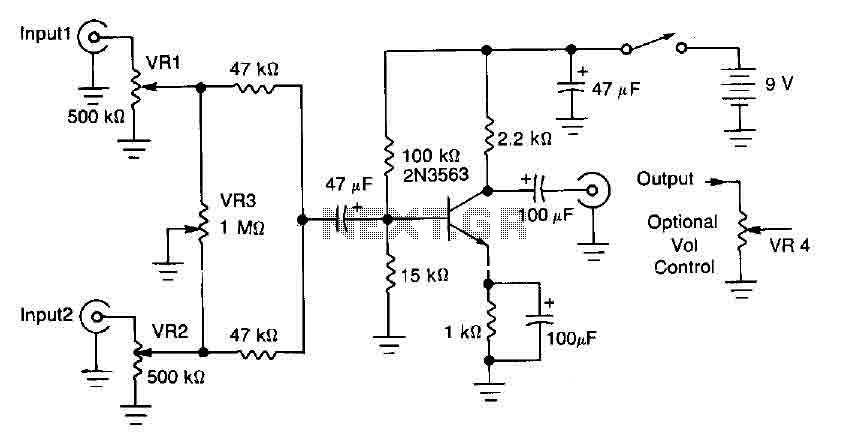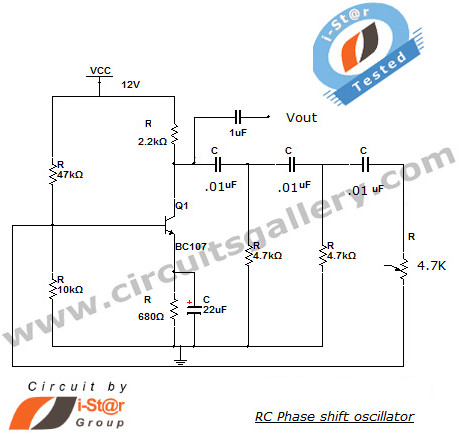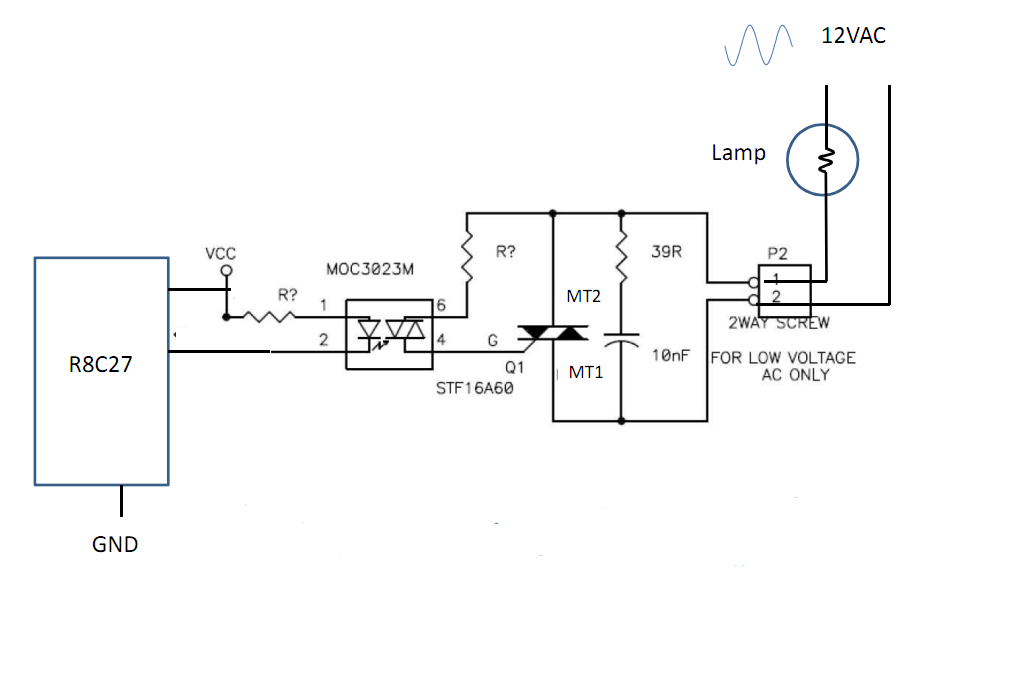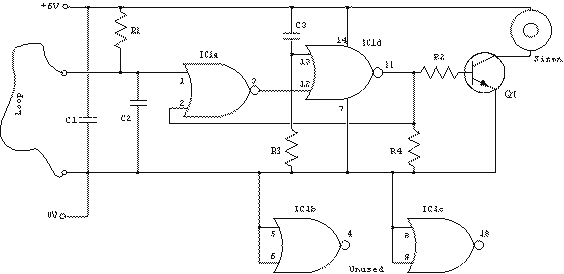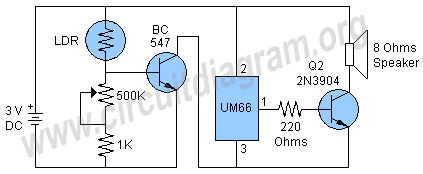
BC 547 Transistor For Garage Alarm Sensor
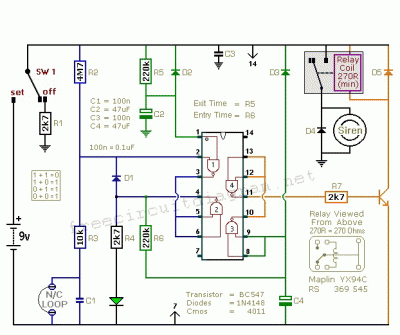
The following circuit illustrates a BC 547 transistor used in a garage alarm sensor circuit diagram. Features include a simple single-zone burglar alarm circuit.
The BC 547 transistor is a popular NPN bipolar junction transistor (BJT) that is frequently used in various electronic applications, including alarm systems. In this specific garage alarm sensor circuit, the BC 547 acts as a signal amplifier and switch, allowing for the detection of unauthorized access.
The circuit typically consists of several key components: the BC 547 transistor, resistors, a piezo buzzer or alarm, and a sensor element, which could be a motion detector or a magnetic reed switch. The sensor is responsible for detecting movement or the opening of a garage door. When the sensor is triggered, it sends a small current to the base of the BC 547 transistor.
This small current enables the transistor to conduct, allowing a larger current to flow from the collector to the emitter. As a result, the connected alarm (such as a piezo buzzer) is activated, emitting a sound to alert the homeowner of a potential intrusion.
Resistors in the circuit are used to limit the current flowing to the base of the transistor, ensuring that it operates within safe limits and preventing damage to the components. Additionally, a power supply is necessary to provide the operating voltage for the circuit, typically ranging from 5V to 12V, depending on the specific design requirements.
Overall, the BC 547 transistor garage alarm sensor circuit is an effective and straightforward solution for enhancing security in a garage environment, offering reliable performance with minimal complexity.The following circuit shows about BC 547 Transistor For Garage Alarm Sensor Circuit Diagram. Features: simple single-zone burglar alarm circuit, .. 🔗 External reference
The BC 547 transistor is a popular NPN bipolar junction transistor (BJT) that is frequently used in various electronic applications, including alarm systems. In this specific garage alarm sensor circuit, the BC 547 acts as a signal amplifier and switch, allowing for the detection of unauthorized access.
The circuit typically consists of several key components: the BC 547 transistor, resistors, a piezo buzzer or alarm, and a sensor element, which could be a motion detector or a magnetic reed switch. The sensor is responsible for detecting movement or the opening of a garage door. When the sensor is triggered, it sends a small current to the base of the BC 547 transistor.
This small current enables the transistor to conduct, allowing a larger current to flow from the collector to the emitter. As a result, the connected alarm (such as a piezo buzzer) is activated, emitting a sound to alert the homeowner of a potential intrusion.
Resistors in the circuit are used to limit the current flowing to the base of the transistor, ensuring that it operates within safe limits and preventing damage to the components. Additionally, a power supply is necessary to provide the operating voltage for the circuit, typically ranging from 5V to 12V, depending on the specific design requirements.
Overall, the BC 547 transistor garage alarm sensor circuit is an effective and straightforward solution for enhancing security in a garage environment, offering reliable performance with minimal complexity.The following circuit shows about BC 547 Transistor For Garage Alarm Sensor Circuit Diagram. Features: simple single-zone burglar alarm circuit, .. 🔗 External reference

